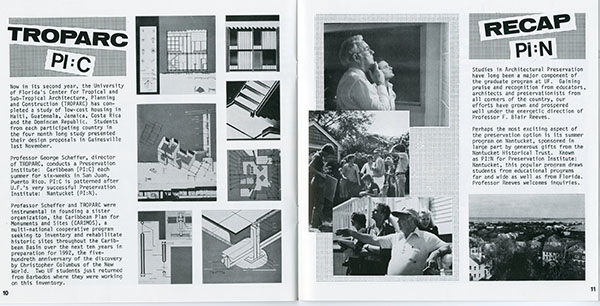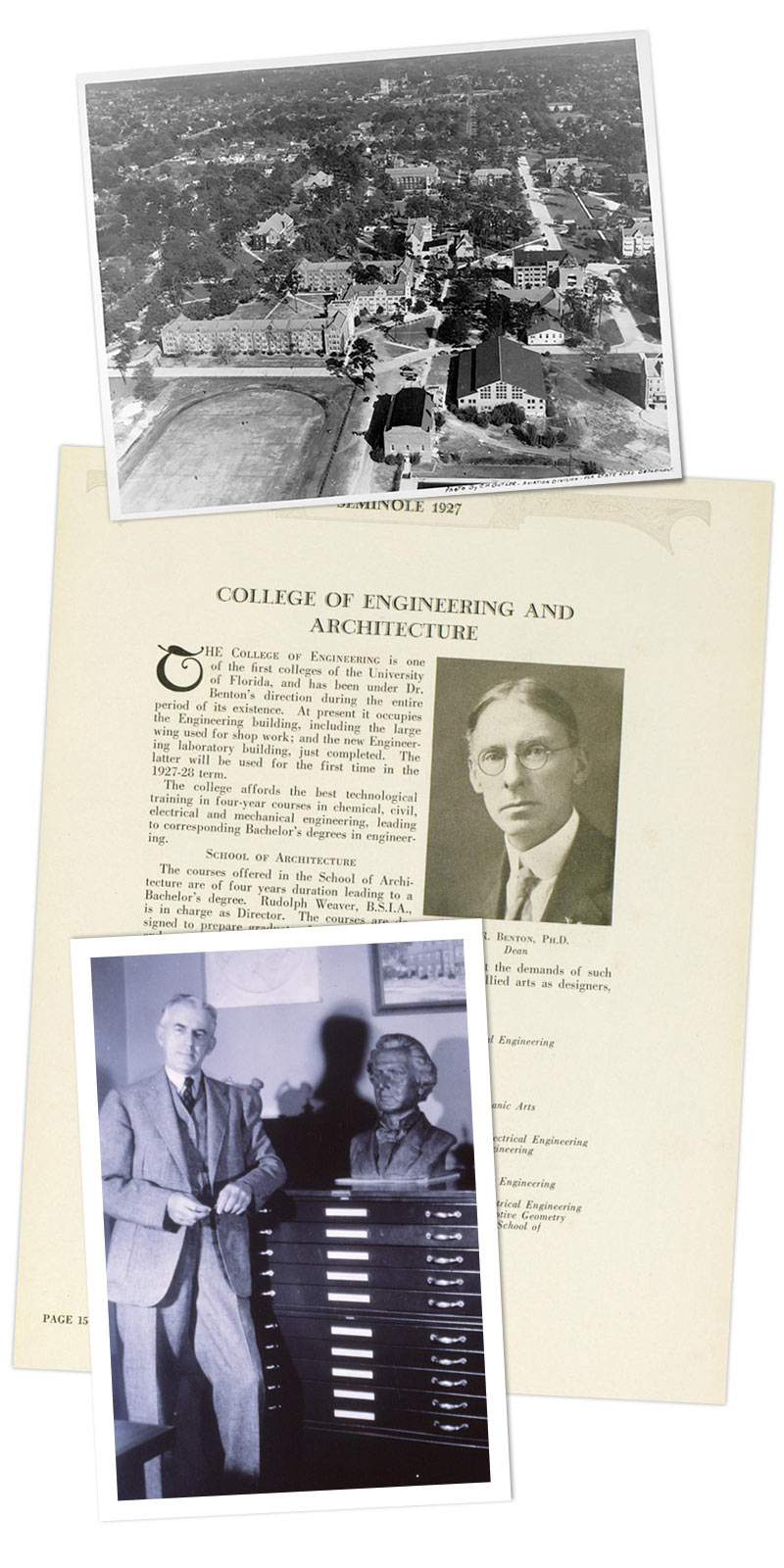
Over the span of nearly a century
The College of Design, Construction and Planning has grown drastically since starting as a school within a neighboring college. Ninety years later, we recount the intriguing stories and vital decisions made throughout the years that established DCP’s legacy.
It all began in 1925, when a renowned architect, Rudolph Weaver, was appointed director of the newly established School of Architecture at the University of Florida. SoA was placed within the College of Engineering and offered a four-year course leading to a Bachelor of Science in Architecture.
Four years later in 1929, the program grew apart from the engineering college and formed its own independent unit, known as the School of Architecture and Allied Arts.
Weaver, who remained as SoA director until 1944, earned a national reputation as the architect to the State Board of Control of Institutions of Higher Learning and was responsible for campus planning for educational institutions around the state.
What do you know about the “Roaring Twenties?”
When you think about the 1920s, do you think of flappers, Henry Ford’s Model T automobiles and famous film stars such as Charlie Chaplin? All these iconic images help shape the dynamic decade into what we remember today.
Facts that helped shape the 1920s:
UF Presidents
-
1909-27: Albert A. Murphree
-
1927-28: (Interim) James M. Farr
-
1928-47: John J. Tigert
University Student Enrollment:
-
1925: 1,860
-
1926: 1,968
-
1927: 2,073
-
1928: 2,270
-
1929: 2,257
World events
-
1926: First female swims the English Channel: Gertrude Ederle
-
1927: Babe Ruth creates the Home-Run Record
-
1928: Sliced bread is invented
-
1929: Start of the Great Depression
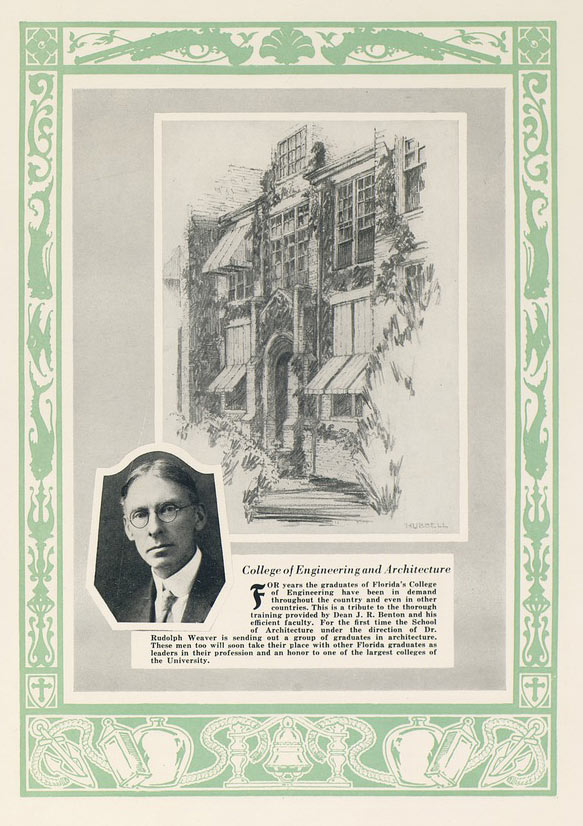
Excerpt from the 1929 UF Yearbook, The Seminole:
”...For the first time the School of Architecture under the direction of Dr. Rudolph Weaver is sending out a group of graduates in architecture. These men too will soon take their place with other Florida graduates as leaders in their profession and an honor to one of the largest colleges of the University.”
Join us this fall as we celebrate the 90th Anniversary of the University of Florida College of Design, Construction and Planning.
1930-39
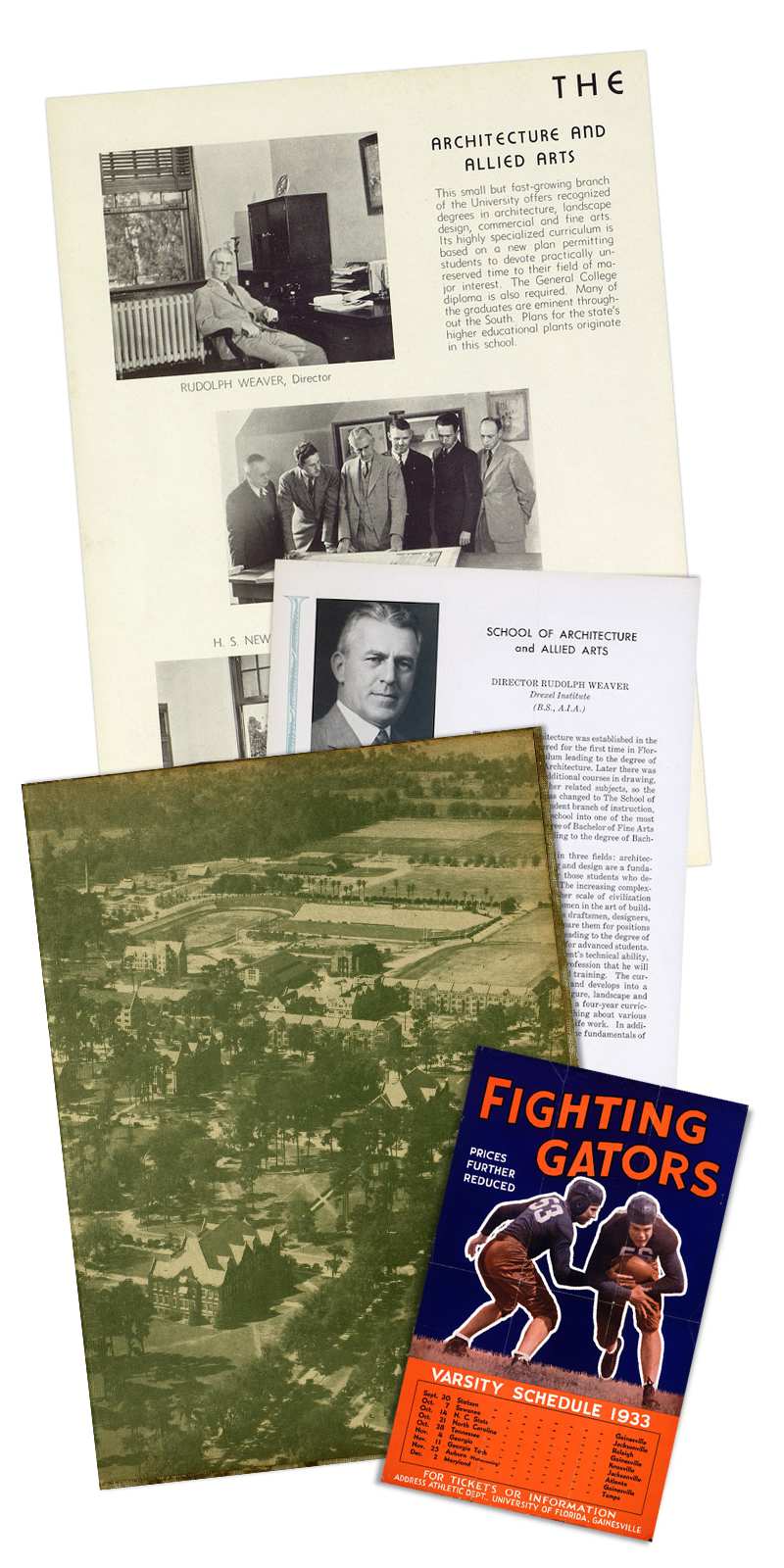
The 1930s: DCP Expands Despite Rough Economy
It was a time of widespread unemployment and poverty that left the majority of us trembling at the thought of a Great Depression ever crossing our paths again. But how did this time of financial instability directly influence the university, or specifically, our college?
Roughly five years after the College’s first establishment, documents from the 1930s indicated that the school kept a steady foot on the ground despite the surrounding downward-spiraling economy.
An excerpt from UF’s 1933 yearbook “The Seminole,” describes when the School of Architecture became an independent unit from engineering in 1929, the demand for additional courses grew along with the overall importance of the program.
The yearbook read, “Later there was a growing demand for additional courses in drawing, design, painting and other related subjects, so the scope of work was enlarged. On May, 1929, the name was changed to the School of Architecture and Allied Arts…with a Director, Professor Rudolph Weaver, who has built the school into one of the most important units in the University.”
Later, additional courses leading to the degree of a Bachelor of Fine Arts and a Bachelor of Commercial Arts were created to meet those demands.
Although the 1930s was a time of financial struggle, our school managed to produce two influential programs during that time period that became vital to shaping our college: Landscape Architecture in 1933 and Building Construction in 1935.
However the case may be, the Great Depression seemed to play a role in everyone’s lives.
In his autobiography “Alfred Browning Parker: A Memoir,” well-known architect Alfred Parker gives a first-hand account of being a UF architecture student in 1935.
“I had been admitted to the School of Architecture at the University of Florida in Gainesville, and was now ready for college, but there was a problem: money,” Parker wrote in his book.
“My folks learned that our state offered all residents free tuition at the Florida public universities and we devised a plan. If my parents skimped and saved, they could come up with fifty dollars a month for college. This amount would have to cover everything – food, rent laundry, books, incidentals – and they put me on the train north.”
-
1933: A four-year course in Landscape Architecture initiated
-
1935: A five-year course leading to the Bachelor of Architecture offered to replace the four-year course
-
1935: A four-year program in Building Construction initiated under the Department of Architecture. BCN is the oldest continuing building construction program in the country.
Listed below are a few facts that helped shape the 1930’s
Facts about DCP:
-
Director: Rudolph Weaver• Enrollment numbers (only University-wide until 1959)
-
1930: 2,252
-
1933: 2,242
-
1936: 2,934
-
1939: 3,323
Facts about UF:
-
President of University: John Tigert (1928-47)
-
University news: 1930: First UF Football game played on Florida Field
World events:
-
1931: U.S. officially gets National Anthem
-
1933: FDR launches New Deal and U.S. prohibition ends
-
1936: Spanish Civil War begins
-
1937: Golden Gate Bridge opens
-
1939: WWII begins
Join us this fall as we celebrate the 90th Anniversary of the University of Florida College of Design, Construction and Planning.
1940-1949
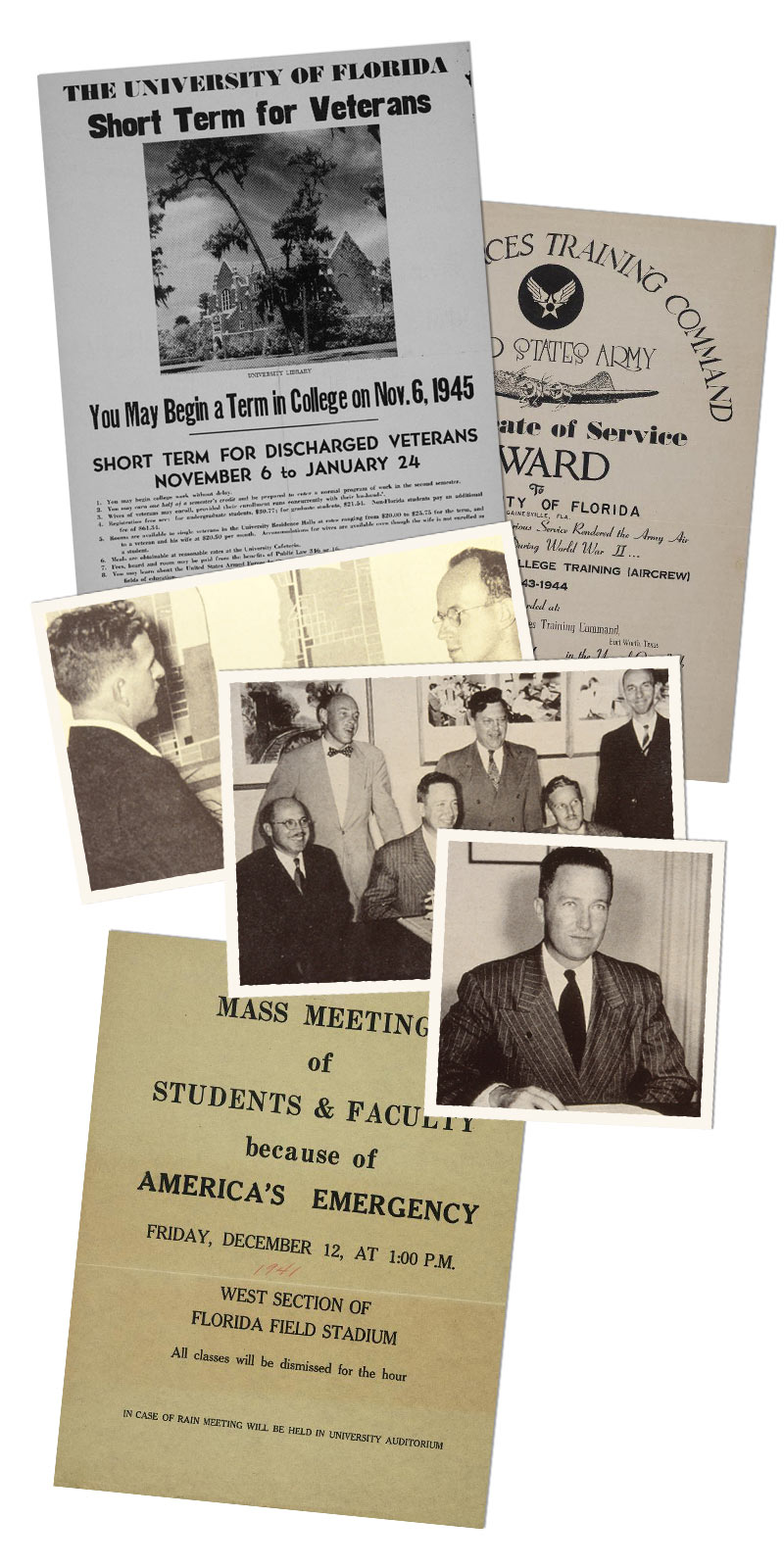
The 1940s: WWII brings changes to DCP
Right when the economy seemed to be bouncing back from the stock market crash, the 1940s brought the U.S. into yet another earth-shattering event: World War II.
On Dec. 7, 1941, the U.S. officially entered into the war, causing thousands of college-aged men to be drafted into the military. Whether you were a young, entrepreneur entering college for the first time or a recent graduate hoping to start your profession, imagine immediately changing your plans in order to serve in the war.
Early records indicate that once the country became involved in the war, student enrollment plummeted, making it seemingly impossible for the college to progress forward in the early- to- mid 1940s.
However, those statistics also show a great post-war student enrollment boom after the war ends in 1945, as thousands of students enlist and create a great spike in the charts.
Although the beginning of the 1940s seemed to be off to a rough start, by the end of the decade, DCP managed to add two more programs under the department of architecture: Interior Design in 1948 and Planning in 1949. The school even received a new director in the 1947: William T. Arnett.
The National Architecture Accrediting Board accredited the School of Architecture and Allied Arts in 1948, permitting it to become the College of Architecture and Allied Arts with Arnett as the dean.
Facts that helped shape the 1940’s
Facts about DCP:
-
1947: William T. Arnett becomes Director of School of Architecture and Allied Arts until 1948
-
1948: Instruction in Interior Design was created
-
1948: The School of Architecture was accredited by the National Architectural Accrediting Board and was changed to the College of Architecture and Allied Arts with Arnett as Dean (1948-65)
-
1949: Fifth-year curriculum of planning for architecture students is created, as well as a master’s degree in community planning
Facts about UF:
-
1947: Post-war student enrollment boom has an increase of 7,413 students registering for that school year
-
Campus-wide student enrollment:
-
- 1940: 3,299
- 1941: 3,074
- 1942: 2,604
- 1943: 588
- 1944: 755
- 1945: 1,503 1
- 946: 6,344
- 1947: 8,778
- 1948: 10,143
- 1949: 10,573
(Statistics from: http://ir.aa.ufl.edu/enrollment)
World events:
-
1941: Attack on Pearl Harbor
-
1944: D-Day
-
1945: Atomic bombs dropped on Hiroshima and Nagasaki
1950-59
The 1950s: A time of growth
The 1950s was a decade famously known for its post-war growth. The decade invited many out from of the shadows into the light of the of its “booming” economy. Luckily, DCP has a few alumni from that decade to better explain what it was like to be a student during that time.
C. Frasuer knight B.Arch: 1950-1953
Building/studio location: In the beginning, it was housed in Building U, a WWII temporary building, located in the shadow of the main library. About half of us went on to "upper" division with the rest deciding to go into building construction, interior design or other fields. Upper division was in Building E, another wartime "temporary" building immediately west of the university administration building (which was under construction) and north of Grove Hall, which was a girls’ dorm at the time.
Most memorable project: Projects began with abstract finger painting and matchstick sculpture to loosen us up. We progressed into basic building design and research with schematics and site planning. All presentations were in watercolor and ink. Most of the class and faculty were WWII veterans. I was part of a handful of students straight from high school who would benefit greatly from the determination of the veterans.
Our curriculum from then until graduation was a "project system". It was similar to real practice, with architecture, structural, mechanical and electrical-related to a program that usually lasted four to eight weeks. When a project was finished, it was graded and we moved on to a new one. There were no final exams; only a comprehensive one covering the five-year program at the end. History, interior design and related civil ran concurrently.
Favorite faculty of staff: Our most inspiring teacher was Ted Fearney, who was forward thinking and took us on field trips to buildings similar to our projects. It was he who assisted in the formation of the first student AIA chapter in the country. This organization sponsored a visiting architect program that included some of the greatest ones of that time including: Frank Lloyd Wright, Richard Neutra, William Lescaze, George Nelson and Paul Rudolph. They provided much needed inspiration. A number of outstanding architects from around the state also came and provided us with grassroots knowledge. Except for Wright, they all visited our studios, critiqued our work and lectured. For Wright, Fearney rented the gymnasium for a ticked lecture available to everyone. It was a packed house and the excess proceeds went to the chapter for future activities.
Steven G. Fogel BCN; 1959-1964
Project: One semester was devoted to a project -all classes. Design a house, make arch. drawings. Design the roof and floor truss systems. Design the plumbing, electrical, and heating. Write the specs. Turn in our bid at a specific bid date and time. Any deficiency resulted in a grade demotion for all classes. Little to no sleep the last week or 2.
Favorite place: I shared a house adjacent to Paine's prairie. Many acres to play on. Hunt snakes with blowguns made from pipettes. Dinners and parties with 3-4 roommates. My favorite place on campus was the old gym above the stadium. YT's bar b que in town was hard to beat – Not to mention the old pool hall.
Favorite memory: My old ‘50 Pontiac convertible had no top. I used visqueen held down with c-clamps and bricks. It only had three fenders and had been painted with floor paint. Driving in from Paine's prairie one morning at 19 degrees was memorable. The car was on the cover of the school newspaper one morning.
Ted McGeeBArch; 1959-1964
Studio: Second floor of Grove Hall
Favorite faculty or staff: Bernie Voychisonk, Turpin C. Bannister, Bert Kensey, Tom Larrick, Dan Branch, Doc GrahamProject: My thesis for the final year was a design for a new law school complex on campus.
Favorite memory: It was the College of Architecture and Fine Arts then. I believe we were the last group in Grove Hall before it was demolished. We all practically lived at Grove Hall what with classes, working and studying in our studio, weekend charettes and having projects critiqued by the professors. As a break in the day, we would make darts from push pins and drafting tape and launch them through a length of 1/2-inch electrical conduit. They were amazingly accurate and could put a dart in the Newell post at the top of the stairs from the other end of the hallway.
Facts that helped shape the 1950’s
Facts about DCP:
-
1957: The college was renamed College of Architecture and Fine Arts with Turpin Chambers as Dean from 1957-65
-
1957: Building Construction became a department under Professor Herman Block
-
DCP enrollment 1959: 307
Facts about UF:
-
1950: 2,433 women enroll at UF
-
1953: Century Tower is built to commemorate the centennial celebration and honor the men killed in WWI and WWII
-
1955: First African American student enrolls at UF, named George H. Starke, Jr.
-
1958: First UF vs FSU Football game; Gators win 27-7 in Gainesville
-
J. Hillis Miller (1948-53).
-
John Allen (Interim President 1953-55)J
-
Wayne Reitz (1955-67)
World events:
-
1950: Korean War begins
-
1951: Color television is introduced
-
1954: Segregation is ruled illegal in the U.S.
-
1958: NASA is founded
Dean(s):
-
1957: The college was renamed College of Architecture and Fine Arts with Turpin Chambers as Dean from 1957-65
-
1957: Building Construction became a department under Professor Herman Block
Campus-wide enrollment
-
1950: 10,077
1951: 9,001
1952: 9,224
1953: 9,626
1954: 9,863
1955: 10,868
1956: 10,997
1957: 11,207
1958: 12,306
1959: 12,710
1960-69
.jpg)
I was born a landscape architect
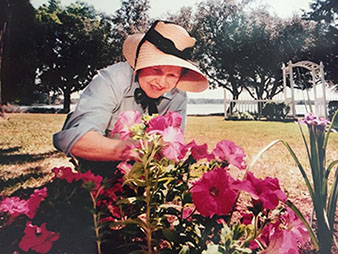
It was 1969 and Gloria Mayberry, who was 42 at the time, was eager to begin her collegiate career.
She pulled into a parking spot near the Administration Building in her little Volkswagen packed full with her belongings and proceeded to search for the building with the architecture classes.
“The woman at the admissions office told me, ‘they don’t take women in the architecture program,’” Mayberry said. “I told the woman, ‘I came up here from Miami to go to school and all my stuff is out in the car in the parking lot. I need to see the Architecture Building. I have a reservation with Herrick Smith.’”
The 88-year-old landscape architect still resonates with the same spirit as she did 46 years ago, as she glanced out her back window at the towering trees surrounding her home and recalled her first time arriving on campus.
“I walked over to the architecture building and was mesmerized,” she said. “It was beautiful. The building was surrounded by beautiful oak trees, and I was just in love with the atmosphere — The University and I fell in love, and I knew I was destined to be there.”
Mayberry said she met with Smith that day, who was the landscape architecture chair at the time, and remembers him encouraging her to enroll for classes, but also warning her that she would be greatly outnumbered by her male colleagues.
“He says to me, ‘you know you’ll be our only woman, right?’” she said. “But my time there was just great. I never had any misgivings, and I enjoyed learning and going on field trips.”
However, that didn’t mean she never received special attention.
“Of course since I was the only woman there, I got a lot of male attention,” Mayberry said with a gentle laugh. “I had no problem finding dates.”
There was a time when a fellow classmate advised her that others were taking note of her while she sat on a high stool in class wearing a dress. She said she went straight to the store that day and bought the most colorful pants she could find.
“And within that same year, women started wearing pants,” she said.
Although records are uncertain, Mayberry believes there may have been one woman in the program before she started, but also noted that many women started coming to campus towards the end of her school career.
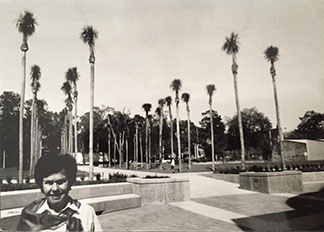
Mayberry currently lives in Hawthorne with her husband, Maurice Mayberry, who founded the UF Career Resource Center, where he worked for more than 30 years.
After graduation, Mayberry served as a consultant for countless years, but still found time to tend to the wildlife surrounding her house, making sure that every plant in her yard was as beautiful as it was the day before.
“I always knew that I wanted to do landscape architecture,” she said. “I was born a landscape architect.”
Facts that helped shape the 1960’s
Facts about DCP:
-
Dean(s):
Turpin Chambers Bannister (1957-65)
Robert Stephen Bolles (1967-1974)
1965: Loys Johnson becomes chairman of the Department of Building Construction. Then in March 1965, he invited representative of other schools of construction to meet at UF to form an organization, which would become the Associated Schools of Construction.
1966: Two teaching lines are established in Landscape Architecture1966: Howard Sebold resigns as Program Director of Landscape Architecture and Herrick Smith is hired
DCP Enrollment
1960: 313
1961: 304
1962: 330
1963: 318
1964: 370
1965: 520
1966: 639
1967: 770
1968: 815
1969: 846
Facts about UF:
- President(s)
J. Wayne Reitz (1955-67)
Stephen C. O’Connel (1967-73)
Campus-wide enrollment
1960: 13,100
1961: 13,634
1962: 13,826
1963: 14,810
1964: 15,701
1965: 16,874
1966: 18,039
1967: 19,004
1968: 19,848
1969: 20,729
World events:
1960: Lasers are invented
1961: President JFK gives “Man on the Moon” speech
1963: First woman goes into space, JFK is assassinated and Martin Luther King gives “ I Have a Dream” speech
1964: Civil Rights Act passes in U.S.
1965: U.S. sends troops into Vietnam
1969: First man on the moon: Neil Armstrong
Join us this fall as we celebrate the 90th Anniversary of the University of Florida College of Design, Construction and Planning.
1970-79

Peace, love and rock n’ roll.
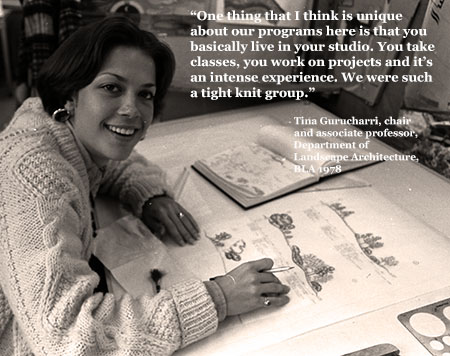
The Seventies was a time of pivotal change among our country’s social progressive values and economic upheavals.
But what was it like being a college student during those times?
Two of DCP’s faculty members were students here in the 1970s and fondly remember what it was like being a student at that time.
“It was a great time to be a student,” said Tina Gurucharri, chair and associate professor in the Department of Landscape Architecture, who was a DCP student from 1973-78. “It was exciting to be here at a time when things were quite rich.”
Many might remember the decade as a time of protests, hippies and streakers.
“We were all hippies,” she said. “We were very environmentally conscious in a time of environmental crisis.”
Peggy Carr, professor and director of the Program in Sustainability and the Built Environment, who was a DCP student from 1972-75, recalls the Vietnam War being a very influential factor during the 1970s.
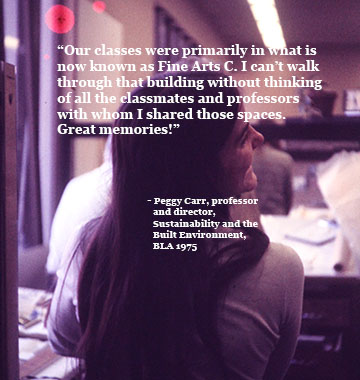
“The war really weighed heavily on all our minds,” she said. “We had several veterans in our classes.”
Carr describes a scene from 1972 when a major protest took place in Gainesville after the U.S. invaded Cambodia.
“We took over 13th Street and University Avenue,” Carr said. “It was rough.”
Even though Carr and her fellow female students were a distinct minority in the program at the time, she said there was never a sense of discrimination. The all-male faculty and male classmates were welcoming and supportive.
Carr remembers fondly the interdisciplinary classes taken in lower division, but also special courses in the upper division. She went with such a group to the Yucatan lead by Bernie Voichysonk.
However, social issues weren’t the only thing prevalent during the 1970s.
In 1975, the College of Architecture and Fine Arts was split into two separate entities: the College of Architecture and the College of Fine Arts.
At the time, the College of Architecture was composed of the Department of Architecture, Department of Building Construction and programs in Interior Design, Landscape Architecture and Urban and Regional Planning with Arnold Butt as the Dean.
Facts that helped shape the 1970’s
Facts about DCP:
-
Dean(s):
Robert Stephen Bolles (1967-74)
Arnold Butt (1975)
Mark T. Jaroszewicz (1976-86)
1972: Preservation Institute Nantucket (PIN) is the nation’s oldest field school for historic preservation, which was officially launched in 1972.
1974: The program in Urban and Regional Planning was added
1975: The College of Architecture and Fine Arts was split into two separate entities, the College of Architecture and the College of Fine Arts.The College of Architecture was composed of the Department of Architecture, the Department of Building Construction, and programs in Interior Design, Landscape Architecture, and Urban and Regional Planning.
1976: The Department of Building Construction was renamed the School of Building Construction
Facts about UF:
President(s)Stephen C. O’Connel (1967-73)
E. Travis York (1973-74)
Robert Q. Marston (1974-84)
DCP Enrollment
1970: 954
1971: 1,004
1972: 1,080
1973: 1,198
1974: 1,321
1975: 981
1976: 833
1977: 800
1978: 828
1979: 918
World events:
1971: VCRs are introduced
1972: Watergate Scandal begins
1973: U.S. pulls out of Vietnam
1974: Nixon resign as President
1975: Microsoft is founded
1979: Sony introduces the Walkman
Join us this fall as we celebrate the 90th Anniversary of the University of Florida College of Design, Construction and Planning.
1980-89

What was it like to be at DCP in the 1980s? To help us answer that question, we have a few alumni memories to share:
David S. Robertson, BDes 1987
Senior Structures Project: 1987 Tensile Structure

Rosser Pace, BCN 1984
Favorite faculty or staff: Jack “No Slack” Martin
Most memorable project: Estimating – Clearwater City Hall
Favorite place on campus: “The Wall” great place to people watch between classes.
Dave Davis, BDes 1986
DCP Story: Studio was more than individual design work, it was training for our future lives working in teams. And team dynamics are never easy. In addition to teaching us his perspective drawing technique (that I use to this day) Harry Merritt introduced our studio to the Pareto Principle, otherwise known as the 80-20 rule.
The day had turned into night and then the following morning, and most of us worked through it all on the base model that we planned to use for the studio’s work that semester. But there were one or two classmates that had other places to be, and all the coffee and Skeeters Big Biscuits seemed to bring out the worst in the rest of us as we complained to Harry about our plight. That’s when the Pareto Principle came out. Without lecturing us on the selfishness of our whining, or accepting our complaints, he simply commenced to name about twenty different things that met the Principle’s concept. He started with, “20 percent of the items on the menu are ordered by 80 percent of the people” and his thoughts continued until he finally said, “…and 20 percent of the people in this world do 80 percent of the work and the sooner you simply accept that fact and get on with it, the sooner we get this model finished.
”And that was that. But the philosophy he introduced us to was one of the more lasting notions of my architectural education. I shared this story today as one of my favorites, as I complete studies to become a Family Nurse Practitioner. And I can honestly say that Harry’s lesson, along with the design education I received at the UF College of Architecture, has served me well through a Naval Career and a second career as a Nurse.
I see that one of Harry’s Gainesville homes has been recommended for addition to the National Register of Historic Places. If there can be only one of our professors who obtain that honor, it ought to be Harry. Thanks again Harry Merritt for the design education and more importantly the life’s lessons you shared with us.
Facts that helped shape the 1980’s
Facts about DCP:
-
Dean(s):
Mark T. Jaroszewicz (1976-1986)
Anthony J. Catanese, Ph.D. (1986-1989)
1982: Preservation Institute: Caribbean began (PI:C)
1983: Vicenza Institute of Architecture started
1984: The Design Exploration Program established
1984: GeoPlan, the Geo-Facilities Planning and Information Research Center, was established in the Department of Urban and Regional Planning within the College of Architecture.
1986: In July, Dr. Anthony J. Catanese was appointed Dean and served until Dec. 31, 1989, when he left to assume the Presidency of Florida Atlantic University
1988: A doctoral program in architecture and building construction was initiated and later expanded to include all academic units
1989: Florida legislature establishes the Center for Affordable Housing at UF’s Rinker School of Construction Management, which is later renamed to the Shimberg Center
1989: The School of Building Construction was renamed the M.E. Rinker, Sr. School of Building Construction
Facts about UF:
President(s)
Robert Q. Marston (1974-84)
Marshall M. Criser, Jr. (1984-89)
Interim: Robert A. Bryan (1989-90)
World events:
1981: First woman appointed to the U.S. Supreme Court and the PC ws introduced by IBM
1985: First Internet domain name is registered
1989: The World Wide Web is invented
DCP Enrollment
1980: 982
1981: 867
1982: 868
1983: 882
1984: 941
1985: 926
1986: 897
1987: 879
1988: 887
1989: 896
Join us this fall as we celebrate the 90th Anniversary of the University of Florida College of Design, Construction and Planning.
1990-99
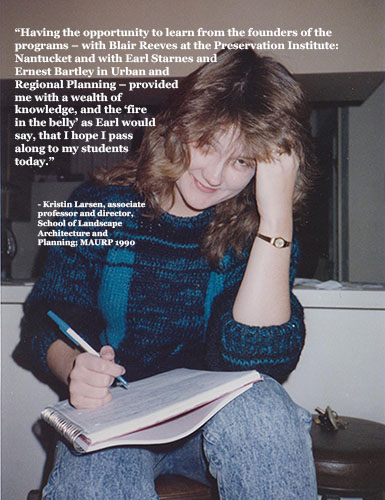
Kristin Larsen, associate professor and director of the School of Landscape Architecture and Planning, recalls her time as a DCP student in the late 1980s and early 1990s.
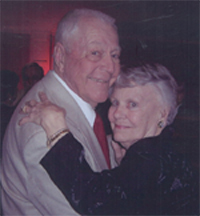
What can a second-year design student, a construction management senior and a graduate student in urban and regional planning learn from each other? A lot, as the Witters Competition has demonstrated for the past 22 years.
The college’s legendary competition began in 1993 as an opportunity for the individual disciplines to work together during an annual problem-solving exercise.
The yearly design competition was created through an endowment sponsored by Colonel and Mrs. Arthur G. Witters of Orlando, Florida. The Witters wanted to provide students with the opportunity to better understand each discipline’s role in various projects. While in school, students primarily work with others in their own discipline. But once students graduated, they would work with the other college disciplines nearly every day.
The competition fosters cooperation among the designers, construction managers and planners by providing the chance for interdisciplinary student teams to work together on a real-world project and learn more about what each discipline brings to the table.
Structured as a charette, students work around the clock for 24 to 48 hours on a different problem, from redevelopment and creative reuse to preserving historic homes to envisioning new buildings. Each year, a DCP faculty member developed the problem and led the competition process.
For many years, the Witters had traveled to watch the final team presentations. After the 2007 competition, Colonel Witters said, “We started this competition so all disciplines in the college could talk and work with one another. Your hard work this weekend made it possible and we are very proud of all of you.”
Although the Witters have passed away in recent years, DCP had the chance to write an article featuring the couple.
“Arthur and Beverley made a generous endowment to the University of Florida to create the ‘Witters Competition’; an academic exercise conducted annually and intended to foster greater cooperation between the design and construction disciplines,” the article said. “They will both be missed by a large and loving family and many friends in the area and around the country.”
Read more about the Witters Competition
DCP alumni story:

"While an undergrad student, I met a delightful young man the ‘Building E’ Architecture Building. Moved back to Gainesville in late 80’s to get my Master of Architecture degree – in 1991. That ‘young man’ and I just celebrated our 50th wedding anniversary! Good things can happen in Gainesville.”- Linda Rickman, BDes 1963, MArch 1991
Facts that helped shape the 1990’s
Facts about DCP:
-
Dean(s)
Dr. Richard H. Schneider (1990)
R. Wayne Drummond (1990-1999)
Jay M. Stein, Ph.D., FAICP (1999-2005)
1991: Formation of Powell Center
1991: Center for Affordable Housing was named Shimberg Center for Affordable Housing
1999: A graduate track in Sustainable Construction was offered
1999: In May, Dr. Jay M. Stein stepped down as chair of the Department of Urban and Regional Planning and accepted an appointment as interim dean of the College of Architecture.
Facts about UF:
1996: Gator Football wins first Championship; UF vs FSU 52-20
World events:
1991: Operation Desert Storm began
1992: Official end of the Cold War 1997: Scientist clone sheep
DCP Enrollment
1990: 980
1991: 1,073
1992: 1,090
1993: 1,094
1994: 1,093
1995: 1,179
1996: 1,459
1997: 1,500
1998: 1,473
1999: 1,542
Join us this fall as we celebrate the 90th Anniversary of the University of Florida College of Design, Construction and Planning.
2000-2010
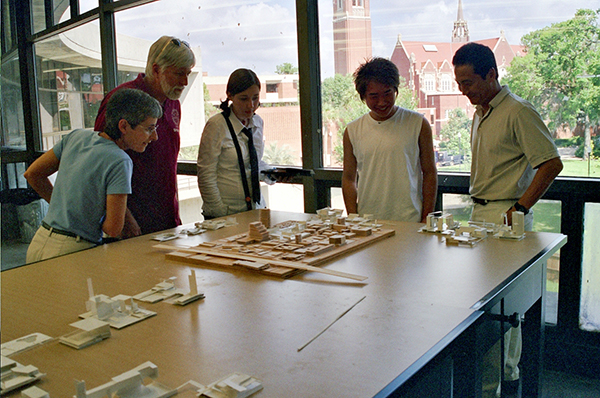
2005: Students participate in the Design Exploration Program, a 3-week long summer program that began in 1983 for high school students who have completed their freshman year.
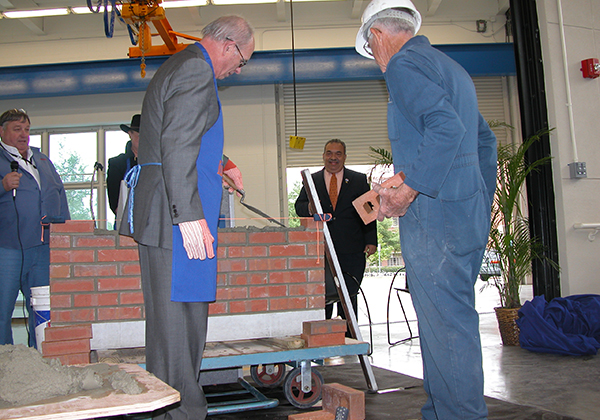
2007: The Charles R. Perry Construction Yard was dedicated three years after the Charles R. Perry Crafts Awareness Program was created.
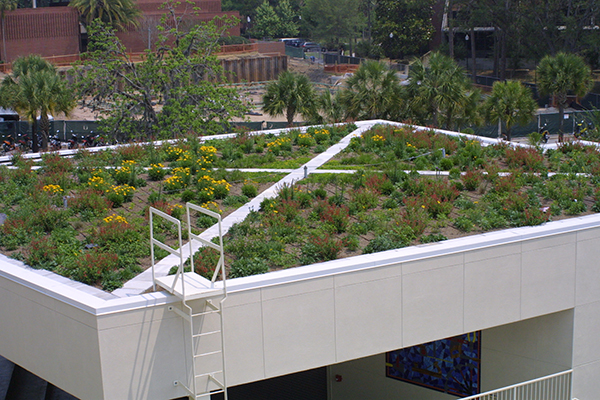
2007: The Construction Yard has a green roof, which makes it the first of its kind on UF’s campus.
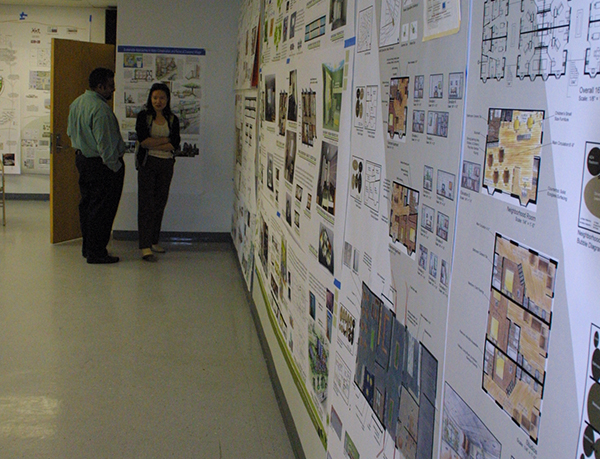
2007: Interior Design students look closely at different residential spaces at Diamond Village.

2008: An instructor and student examine the Landscape Architecture projects about the Manatee Convention Center in Palmetto, Florida.

2008: Historic Preservation students take a trip to New Orleans.

What better way to celebrate the early 2000s than by remembering the completion of Rinker Hall in 2003, which was awarded the gold certification from the U.S. Green Building Council’s Leadership in Energy and Environmental Design, or LEED, Rating System.
Rinker Hall is the first in Florida, and is only the 26th building in the United States to receive gold certification from LEED.
Alumni Story:
Neal Schafers, MLA 2007
Favorite faculty: Maria Tina Gurucharri,Peggy Carr and Gail Hansen.All three of these teachers were some of the best instructors I have ever had the privilege of learning from. They are all extremely knowledgeable and passionate in what they do; but more than that, they actually take a vested interest in their students and their respective futures.
Project: The Witter’s competition: a multi-disciplinary competition featuring teams made up of architects, landscape architects, urban/regional planners, construction managers and interior designers.
Our team consisting of Key Ray, Jennifer Mackey, Andrea Colbert, Antonia Mariassy, Iris Patten, and myself Neal Schafers won the competition in 2006. Our design for the restoration and preservation of the Cotton Club to the Spring Hill Community beat out numerous other designs and presentation by a very talented field. But above all, the greatest feeling was the sense of actually serving a part of the community, whose needs were often overlooked.
Favorite place on campus:
1. Ben Hill Griffin Stadium, aka The Swamp. No better place on Earth on Game Day!
2. Architecture Building courtyard. Tossing the Frisbee on the grass under sunshine between classes.
3. Anywhere but the studio. That place was basically your home for 3 years.
Favorite memory: On the night the Gators Basketball team won their first national championship, a large group of us celebrated well into the night/following morning. However, the next day I had a presentation to give at 8 a.m., so with only a couple hours of sleep, and perhaps slightly hungover, I biked back to campus. On the way, I actually got into a bike accident, because I could barely stay awake. However, despite being bloodied and shaken up, I still made it to class, and actually gave a pretty good presentation.
The moral of the story: never underestimate the dedication and tenacity of Gator students!
Jessica Elliott, BDes 2013
Building & Studio: Fine Arts C and the Architecture Building
Favorite faculty or staff: John Maze, Guy Peterson, Andy Wehle, Rocky Hill, Stephen Bender and Hui Zou
Memorable Project: University Scholars Program Research Project with Dr. Zou comparing the urban public spaces of China, Italy and Southern Florida after studying abroad through DCP’s Vicenza and UF in East Asia programs
Favorite place: The atrium of the architecture building. It was where people would take breaks from studio, nap, each lunch, meet up with friends, and it was where events like APX’s annual Halloween Extravaganza would take place.
Favorite memory: One of the most memorable moments from my time as a DCP student was the memorial celebrating the life of Jade Guzzo. In D5, after we lost Jade to a tragic car accident following Thanksgiving break, the memorial service that was held in the atrium was one of the most powerful displays of love and togetherness, which symbolizes the incredible bond and sense of family that we all build together throughout our time in architecture school. Our critic, Stephen Bender even presented her design during the final review. Rest in peace, Jade.
Facts that helped shape the 2000’s
Facts about DCP:
-
Dean(s)
Jay M. Stein, Ph.D., FAICP (1999-2005)
Anthony Dasta (2005-2006)
Christopher Silver, Ph.D., FAICP (2006-present)
2000: The College of Architecture was renamed College of Design, Construction and Planning. The Department of Architecture was renamed School of Architecture. Thus, the College of Design, Construction and Planning is composed of two schools: the M. E. Rinker, Sr. School of Building Construction, the School of Architecture, and three departments; the Department of Interior Design, Department of Landscape Architecture and the Department of Urban and Regional Planning.
2002: Center for Construction and Environment was renamed Powell Center for Construction and Environment.
2003: The M.E. Rinker, Sr. School of Building Construction moved into its new building, Rinker Hall, which was the 26th building in the country to have been awarded LEED Gold certification by the U.S. Green Building Council.
2007: Charles R. Perry Construction Yard was dedicated, which has a green roof, making it the first of its kind on UF’s campus.
2009: The Departments of Landscape Architecture and Urban Regional Planning were merged to create the School of Landscape ARchitecture and Planning.
Facts about UF:
Presidents(s)
Charles E. Young (1999-2003)
J. Bernard Machen (2003-2014)
World events:
2001: Attack on World Trade Centers
2002: The Euro enters currency circulation
2004: Facebook is launched
2007: Global economic downturn
2009: 3D scanners enter consumer market
DCP Enrollment
2000: 1,544
2001: 1,566
2002: 1,540
2003: 1,598
2004: 1,615
2005: 1,668
2006: 1,587
2007: 1,645
2008: 1,537
2009: 1,480
2010: 1,397

